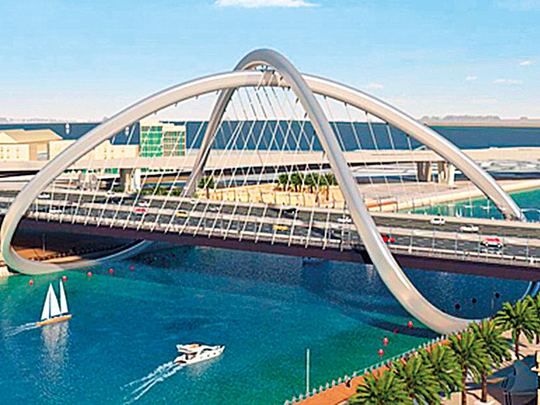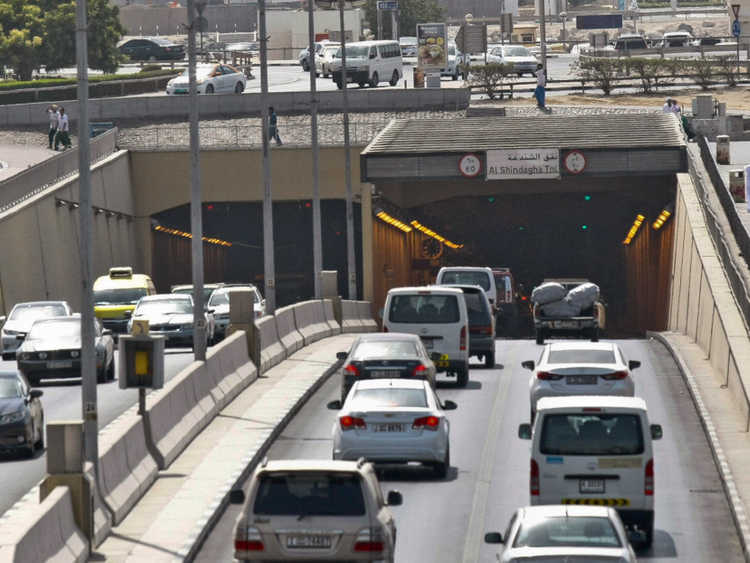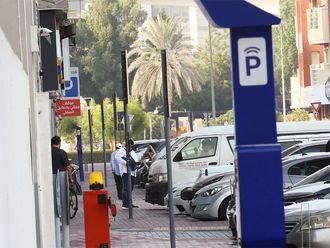
Dubai: Work on a 12-lane Shindagha bridge connecting the historic districts of Al Shindagha and Al Ras has begun and, according to the Roads and Transport Authority (RTA), the bridge will not replace the Shindagha Tunnel.
Originally designed to replace the 45-year-old Shindagha Tunnel, the only crossing in the area, the new bridge is now set to run parallel to the tunnel, both serving traffic simultaneously.
“The new bridge is 230 metres away from the current tunnel towards the sea. The bridge will not replace the tunnel, but will be an addition as the current tunnel will continue to serve the local traffic,” an RTA spokesperson told Gulf News.
Part of the phase three of the Dh5.035-billion Shindagha Corridor project, the 300-metre-long bridge will have the capacity to accommodate 12,000 vehicles per hour per direction.
According to the spokesperson, work on the Dh394-million project has begun in the form of mobilisation and excavation.
The construction work will not impact traffic movement and there will be no diversions as the bridge is being built away from the tunnel, running closer to the sea.
Set to be ready by 2021, the new crossing will be part of the 13-kilometre-long ring road called Shindagha Corridor, boasting an iconic design based on the concept of infinity.
According to a senior RTA official, the design for the bridge was chosen after some of the world’s best architects were invited to present their concepts.
The 22-metre-wide bridge, which is expected to be a major landmark, will rise up to 15 metres high, letting dhows and yachts pass under it.
The Shindagha Tunnel is currently one of the busiest crossings on the creek, with more than 100,000 vehicles passing through it on an average daily.
The crossing is a vital link for thousands of residents, workers and traders who live or work on either sides of the historic business districts of Al Ras and Bur Dubai.
With only two lanes on each side, the tunnel has proved to be a bottleneck in the recent past, particularly during evening peak hours, when the traffic tails back to several kilometres.
The new bridge and the corridor is expected to remove the bottleneck and more than double the capacity of the crossing.
Running all the way from Al Mamzar, in the far end of Deira, the Shindagha Corridor passes along Cairo Street, Al Khaleej Road, Meena Street and Shaikh Rashid Road, creating a 13-kilometre-long expressway through some of the most congested parts of historic Dubai.
The project will see development of 15 intersections along the corridor, converting the signalised junctions into free-flowing flyovers and underpasses that will remove all traffic bottlenecks.
The corridor begins at the intersection between Cairo Street and Al Rasheed Street in Al Mamzar and ends at the Wafi interchange, which was upgraded as part of phase one in 2016.
cost of the 300-metre long and 22-metre wide Shindagha bridge
Some of the key developments along the corridor include Al Mamzar bridge, the Abu Hail bridge and the Sana interchange which opened for traffic earlier this year as part of the Dh611-million phase two, including an eight-lane underpass, a four-lane flyover and an elevated exit.
Apart from the Shindagha Bridge, phase three also includes construction of the Corniche Street, running parallel to Al Khaleej Street as well as improvements of the Falcon Junction and entry/exit points for Rashid Port.
The total length of the bridges and flyovers to be built as part of Shindagha Corridor will stretch to 8.5km, while the underpasses and surface roads extend another 8.5km. It also involves the construction of 10 surface junctions and will be completed by 2022.
In the fourth phase, the construction will include upgrade of Al Khaleej Street along with its intersections with Abu Hail Street, along with the upgrade of the Shaikh Rashid Street intersection with Jumeirah Street, Al Mina Street and Al Mankhool Street.
Flyovers stretching up to 3.4km will build as part of this phase, while underpasses will run for 2.25km. This phase is expected to be ready by 2025.
Phase 5, which covers the construction of Deira Southern Island, with bridges spanning 1.5km, is expected to be ready by 2027.












